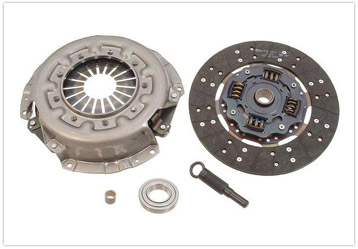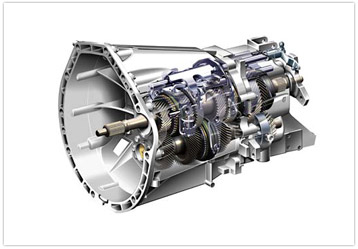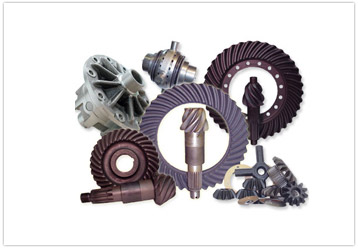

At Premier Automotive Transmission we carry a plethora of premium, quality parts so that the transmission repair Delta or clutch repair Lander job is not only done right, but done with products that meet or exceed industry standards. Below you will find a small description of some of these parts.

CLUTCHES
We carry a wide variety of clutch kits for clutch repair Delta, clutch repair Ladner and surrounding areas, including disc, pressure plates and release bearings. The clutch is the mechanical device that provides for the transmission of power (and therefore usually motion) from one component (the driving member) to another (the driven member) when engaged, but can be disengaged.
Clutches are used whenever the transmission of power or motion must be controlled either in amount or over time (e.g., electric screwdrivers limit how much torque is transmitted through use of a clutch; clutches control whether automobiles transmit engine power to the wheels).
In the simplest application, clutches connect and disconnect two rotating shafts (drive shafts or line shafts). In these devices, one shaft is typically attached to a motor or other power unit (the driving member) while the other shaft (the driven member) provides output power for work. While typically the motions involved are rotary, linear clutches are also possible.

TRANSMISSIONS & TRANSMISSION PARTS
We carry a complete line of rebuilt automatic and standard transmissions for transmission repair Delta, transmission repair Ladner on Import and Domestic cars and light trucks. Transmissions parts including, OH Kits, Shift Kits, Torque convertors, filters and electronic components.
The most common use is in motor vehicles, where the transmission adapts the output of the internal combustion engine to the drive wheels. Such engines need to operate at a relatively high rotational speed, which is inappropriate for starting, stopping, and slower travel. The transmission reduces the higher engine speed to the slower wheel speed, increasing torque in the process. Transmissions are also used on pedal bicycles, fixed machines, and anywhere rotational speed and torque must be adapted.
In motor vehicles, the transmission generally is connected to the engine crankshaft via a flywheel and/or clutch and/or fluid coupling, partly because internal combustion engines cannot run below a particular speed. The output of the transmission is transmitted via driveshaft to one or more differentials, which in turn, drive the wheels. While a differential may also provide gear reduction, its primary purpose is to permit the wheels at either end of an axle to rotate at different speeds (essential to avoid wheel slippage on turns) as it changes the direction of rotation. If you require transmission repair Ladner, transmission repair Delta or clutch repair Delta & clutch repair Ladner, we have you covered.

DIFFERENTIAL PARTS
We stock a wide variety of new and used differential parts for domestic and import cars and trucks. Crown and Pinion sets, bearings kits, axles and shims.
A differential is a device, usually, but not necessarily, employing gears, which is connected to the outside world by three shafts, chains, or similar, through which it transmits torque and rotation. Except in some special-purpose differentials, there are no other limitations on the rotational speeds of the shafts, apart from the usual mechanical/engineering limits. Any of the shafts can be used to input rotation, and the other(s) to output it.
In automobiles and other wheeled vehicles, a differential is the usual way to allow the driving roadwheels to rotate at different speeds. This is necessary when the vehicle turns, making the wheel that is travelling around the outside of the turning curve roll farther and faster than the other. The engine is connected to the shaft rotating at angular velocity \scriptstyle a. The driving wheels are connected to the other two shafts, and \scriptstyle p and \scriptstyle q are equal. If the engine is running at a constant speed, the rotational speed of each driving wheel can vary, but the sum (or average) of the two wheels' speeds can not change. An increase in the speed of one wheel must be balanced by an equal decrease in the speed of the other. (If one wheel is rotating backward, which is possible in very tight turns, its speed should be counted as negative.)






